uruguay
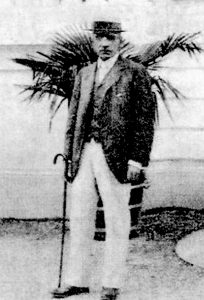 I’m not a superstitious person…don’t believe in that sort of thing, but I can a strange coincidence as clearly as the next guy. Ramon Artagaveytia was born July 14, 1840 in Montevideo, Uruguay, to Ramon and Maria Artagaveytia. December 24, 1871 found Artagaveytia sailing on the America, a ship out of Uruguay, when the boiler overheated and caught fire. The resulting catastrophic damage doomed the America to the ocean floor. Witnesses said that the America had been racing another ship into the port at Montevideo Harbor at a high rate of speed, and it is thought that the excessive boiler pressure caused it to catch fire.
I’m not a superstitious person…don’t believe in that sort of thing, but I can a strange coincidence as clearly as the next guy. Ramon Artagaveytia was born July 14, 1840 in Montevideo, Uruguay, to Ramon and Maria Artagaveytia. December 24, 1871 found Artagaveytia sailing on the America, a ship out of Uruguay, when the boiler overheated and caught fire. The resulting catastrophic damage doomed the America to the ocean floor. Witnesses said that the America had been racing another ship into the port at Montevideo Harbor at a high rate of speed, and it is thought that the excessive boiler pressure caused it to catch fire.
At the time of her sinking, America was carrying 114 first class, 29 second class, and 30 “popular” class passengers. I’m not sure what “popular” class, was, but I assume steerage. Of the 173 passengers, only 65 survived the sinking. Artagaveytia probably would not have been one of them, but he made a last ditch effort and jumped overboard and swam for his life. He recalled later that so many of the passengers were badly burned, and the ensuing nightmares Artagaveytia suffered, kept him too terrified to travel by ship for the next 40 years. That was particularly hard for Artagaveytia, who came from a family of sailors.
In 1905, Artagaveytia took over a farm in Garamini, Argentina. In 1912, Artagaveytia was still living in Argentina, but decided visit his nephew, who was the head of the Uruguayan Consulate in Berlin. Before returning home to Argentina, he decided to visit the United States, and it was that decision that sealed his fate. Artagaveytia told his cousin that he finally felt at ease about traveling on a ship. He thought he might even be able to sleep while on board, and not stand always at the rail wearing his life jacket. The thing that finally made him feel better about travel by ships was the wireless telegraph. He finally thought that someone would know  where these ships were, and that they could arrive quickly to help if needed. With that knowledge and the peace of mind it brought with it, Artagaveytia boarded the Titanic. Everyone knows the fate of the Titanic, and how so many mistakes were made…from sailing too fast, to ignoring the warnings, to turning off that all important radio. Ramon Artagaveytia had survived the sinking of the steamer America, but he would not make such an escape from Titanic. About a week after the disaster, his body was pulled from the North Atlantic. Once they were sure of his identity, he was returned to the Uruguayan Consul at Halifax. His body was forwarded to New York and then to Montevideo, Uruguay. He was buried in Cemeterio Central in Montevideo on June 18, 1912.
where these ships were, and that they could arrive quickly to help if needed. With that knowledge and the peace of mind it brought with it, Artagaveytia boarded the Titanic. Everyone knows the fate of the Titanic, and how so many mistakes were made…from sailing too fast, to ignoring the warnings, to turning off that all important radio. Ramon Artagaveytia had survived the sinking of the steamer America, but he would not make such an escape from Titanic. About a week after the disaster, his body was pulled from the North Atlantic. Once they were sure of his identity, he was returned to the Uruguayan Consul at Halifax. His body was forwarded to New York and then to Montevideo, Uruguay. He was buried in Cemeterio Central in Montevideo on June 18, 1912.

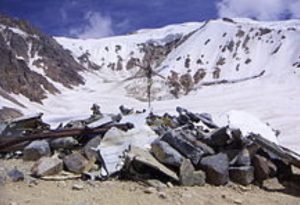 Years ago, I watched a movie about the survivors of a Uruguayan plane that crashed in the Andes Mountains. The crash and the survival amazed me, because against all odds, the 16 men who were rescued on December 22, 1972 had survived 72 days on a glacier at 11,710 feet in the bitter cold. The plane, a Fairchild FH-227D, was a chartered Uruguayan Air Force plane, designated as Flight 571, carrying 45 people. The flight carrying 19 members of a rugby team, family, supporters, and friends, took off from Montevideo, Uruguay on Friday, October 13, 1972, en route to Santiago, Chile. An error in the pilot’s calculations caused the plane to turn north too soon from the mountain pass it was going through, and put it on a collision course with the mountain peaks on either side of it. There were initially 28 people who survived the crash, but injuries, bitter cold, and an avalanche took the lives of all but the 16 who were rescued. The rescue might never have happened had not Nando Parrado and Roberto Canessa make the trek from the glacier known before the crash as the Valley of Tears, in the Cordillera.
Years ago, I watched a movie about the survivors of a Uruguayan plane that crashed in the Andes Mountains. The crash and the survival amazed me, because against all odds, the 16 men who were rescued on December 22, 1972 had survived 72 days on a glacier at 11,710 feet in the bitter cold. The plane, a Fairchild FH-227D, was a chartered Uruguayan Air Force plane, designated as Flight 571, carrying 45 people. The flight carrying 19 members of a rugby team, family, supporters, and friends, took off from Montevideo, Uruguay on Friday, October 13, 1972, en route to Santiago, Chile. An error in the pilot’s calculations caused the plane to turn north too soon from the mountain pass it was going through, and put it on a collision course with the mountain peaks on either side of it. There were initially 28 people who survived the crash, but injuries, bitter cold, and an avalanche took the lives of all but the 16 who were rescued. The rescue might never have happened had not Nando Parrado and Roberto Canessa make the trek from the glacier known before the crash as the Valley of Tears, in the Cordillera.
Recently I read another book on the flight, called Out Of The Silence: After The Crash by Eduardo Strauch, one of the survivors of the crash. The book was very good, and while it didn’t tell more than the movie had shown exactly, it put a very different perspective on the dire situation of the survivors, and the faith of the survivors and their loved ones, waiting at home for news. The book talked about the many premonitions, visions, and dreams that came out of the endless hours of waiting. It spoke of the several people who had a premonition before takeoff that the plane might crash. It spoke of the mother, who at the time of the crash had a vision of her son sitting in the plane seat covered in blood. She said that he looked like he was sleeping and she knew that he had died…she was right. It spoke of another mother who saw her son with just a bruise on his head, but very much alive. He was, and the bruise was where she saw it. And it spoke of the vivid dream Nando had, of the survivors being rescued by Christmas…which they were.
The book reminded me of times in my own life when I have experienced such “foretelling of things to come.” Because of my deep religious convictions I struggle with things like psychics and I don’t believe in séances or talking to the dead, but rather that God tells us of things to come, a truth which is found in His Word, the Bible. I recalled the time that I was at my mom and dad’s house, and Dad was at work. The phone rang, and I suddenly got an uncomfortable feeling that something had happened to my dad. I discounted it when the call on the phone that seemingly brought the feeling about, turned out to be something else. I went home, and when I got there, my mom called to tell me that a heavy steel beam had fallen on my dad’s foot, crushing his little toe, which is not protected by the steel toe on a boot. I have since marveled at the fact that I had that feeling at the precise time of the accident.
Mom also had such a “telling of things to come” after my Dad became ill in Canada, while they and my sister Cheryl were on vacation, driving on the north shore of Lake Superior. My sisters, Caryl, Alena, Allyn, and I had rushed to Canada to be with the them and hold vigil over our very ill dad. One night, Mom woke us all up saying that we needed to pack up, because we were going to be taking Dad home that day. At the time we thought that she was in a state of crazed delirium, due to the stress and seriousness of the situation. While listening to Nando’s announcement to his friends upon awaking from his dream on that mountain, saying that they would be home by Christmas, it occurred to me that while her timing was off, my mom was right in that Dad would leave that place and come back to his life here.
It is a very strange thing to know that God has spoken to you in such a way, and many people do not even believe that it happened, but too many of these incidences have taken place to discount them. There were 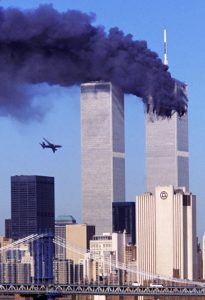
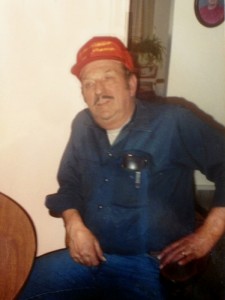 several people who worked in the World Trade Center on September 11, 2001, who were told by God not to go to work that day. Those who obeyed, were later shocked by what took place, and the part they might have played in those events. There was also a woman in the second tower, who when the announcement was made to return to their offices, was told by God to “get out of there and take as many people with her as she could.” She obeyed and saved a number of people who chose to listen to her warning that they must leave immediately. Whatever you choose to call these events, they are real, and while we never know at the moment they come, if we will look foolish for listening to them, or be exonerated when things play out exactly as we saw them…we find ourselves in the position of making a choice to listen or not to…come what may.
several people who worked in the World Trade Center on September 11, 2001, who were told by God not to go to work that day. Those who obeyed, were later shocked by what took place, and the part they might have played in those events. There was also a woman in the second tower, who when the announcement was made to return to their offices, was told by God to “get out of there and take as many people with her as she could.” She obeyed and saved a number of people who chose to listen to her warning that they must leave immediately. Whatever you choose to call these events, they are real, and while we never know at the moment they come, if we will look foolish for listening to them, or be exonerated when things play out exactly as we saw them…we find ourselves in the position of making a choice to listen or not to…come what may.
 On October 13, 1972 a plane crashed somewhere in the Andes Mountains. That isn’t such an unusual event, but the crash was the last part of this event that was not unusual. Flight 571 was en route from Uruguay to Chili at the time it went down. The Uruguayan Air Force plane was chartered by the Old Christians Club to transport the team from Montevideo, Uruguay to Santiago, Chile. On October 12 the twin-engined Fairchild turboprop left Carrasco International Airport. The plane was carrying 5 crew members and 40 passengers. In addition to club members…friends, family, and others were also on board, having been recruited to help pay the cost of the plane. Because of poor weather in the mountains, they were forced to stay overnight in Mendoza, Argentina, before departing at about 2:18 pm the following day, October 13th. Although Santiago was located to the west of Mendoza, the Fairchild was not built to fly higher than approximately 22,500 feet. Because the Andes mountains were higher than that, the pilots plotted a course south to the Pass of Planchón, where the aircraft could safely clear the Andes mountains. An hour after takeoff, the pilot notified air controllers that he was flying over the pass, and shortly thereafter he radioed that he had reached Curicó, Chile, some 110 miles south of Santiago, and had turned north. However, the pilot had misjudged the location of the aircraft, which was still in the Andes mountains. Unaware of the mistake, the controllers cleared him to begin descending in preparation for landing. Then suddenly, the Chilean control tower was unable to contact the plane.
On October 13, 1972 a plane crashed somewhere in the Andes Mountains. That isn’t such an unusual event, but the crash was the last part of this event that was not unusual. Flight 571 was en route from Uruguay to Chili at the time it went down. The Uruguayan Air Force plane was chartered by the Old Christians Club to transport the team from Montevideo, Uruguay to Santiago, Chile. On October 12 the twin-engined Fairchild turboprop left Carrasco International Airport. The plane was carrying 5 crew members and 40 passengers. In addition to club members…friends, family, and others were also on board, having been recruited to help pay the cost of the plane. Because of poor weather in the mountains, they were forced to stay overnight in Mendoza, Argentina, before departing at about 2:18 pm the following day, October 13th. Although Santiago was located to the west of Mendoza, the Fairchild was not built to fly higher than approximately 22,500 feet. Because the Andes mountains were higher than that, the pilots plotted a course south to the Pass of Planchón, where the aircraft could safely clear the Andes mountains. An hour after takeoff, the pilot notified air controllers that he was flying over the pass, and shortly thereafter he radioed that he had reached Curicó, Chile, some 110 miles south of Santiago, and had turned north. However, the pilot had misjudged the location of the aircraft, which was still in the Andes mountains. Unaware of the mistake, the controllers cleared him to begin descending in preparation for landing. Then suddenly, the Chilean control tower was unable to contact the plane.
The pilot basically found himself caught with high mountains all around him…mountains that he could not climb over. When the plane tried to climb out the wings were clipped by the peaks, and the plane crashed in an unknown location. Because the Chilean control tower thought the plane was much further south, they weren’t even sure where to look. To make matters worse, the white plane was extremely difficult to see against the white snow. Search and rescue efforts from the sky were almost impossible…despite the survivors’ attempts to become noticeable. After 11 days, it was assumed that all of the 45 passengers and crew were dead, so search and rescue efforts ceased. The passengers had access to a radio, and when they heard the news of the search 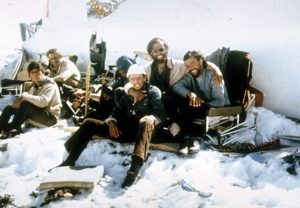 being called off, they were devastated. The crash killed 12 people instantly, leaving 33 survivors to try to stay alive until help could come. A number of the survivors were injured. At an altitude of approximately 11,500 feet, the group faced snow and freezing temperatures. There was no heat, and they only had each other to depend on. While the plane’s fuselage was largely intact, it provided limited protection from the freezing temperatures they faced. Food was scarce…mainly candy bars and wine. Even with rationing, those were gone in about a week. Now the survivors faced the most horrifying decision of their lives. Do they stay alive at all costs, including eating the bodies of the dead for food, or do they simply give up and starve to death? After a heated discussion, the starving survivors resorted to eating the corpses. Their survival instincts had kicked in, even though they knew they might be condemned by the world. Nevertheless, they would probably never forgive themselves anyway, so what the world decided made no real difference. Over the next few weeks six others died, and further disaster struck on October 29, when an avalanche buried the fuselage and filled part of it with snow, causing eight more deaths.
being called off, they were devastated. The crash killed 12 people instantly, leaving 33 survivors to try to stay alive until help could come. A number of the survivors were injured. At an altitude of approximately 11,500 feet, the group faced snow and freezing temperatures. There was no heat, and they only had each other to depend on. While the plane’s fuselage was largely intact, it provided limited protection from the freezing temperatures they faced. Food was scarce…mainly candy bars and wine. Even with rationing, those were gone in about a week. Now the survivors faced the most horrifying decision of their lives. Do they stay alive at all costs, including eating the bodies of the dead for food, or do they simply give up and starve to death? After a heated discussion, the starving survivors resorted to eating the corpses. Their survival instincts had kicked in, even though they knew they might be condemned by the world. Nevertheless, they would probably never forgive themselves anyway, so what the world decided made no real difference. Over the next few weeks six others died, and further disaster struck on October 29, when an avalanche buried the fuselage and filled part of it with snow, causing eight more deaths.
It was decided that someone would have to walk out and tell the officials that they were still alive. On December 12, with just 16 people still alive, three passengers set out for a 10 day journey to find help, though one later returned to the wreckage. After a difficult trek, the other two men finally came across three herdsmen in the village of Los Maitenes, Chile, on December 20. However, the Chileans were on the opposite side of a river, the noise of which made it hard to hear. The herdsmen indicated that they would return the following day. Early the next morning, the Chileans reappeared, and the two groups communicated by writing notes on paper that they then wrapped around a rock and threw across the water. The survivors’ initial note began, “I come from a plane that fell in the mountains.” The Chileans must have heard about the crash, and were most likely stunned to find that there were actually survivors. They hurried to notified authorities, and on December 22 two helicopters were sent to the wreckage. Six survivors were flown to safety, but bad weather delayed the eight others from being rescued until the next day. The 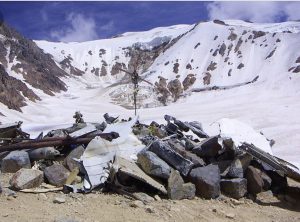 rescue was called the Miracle of the Andes. In the resulting media frenzy, the survivors revealed that they had been forced to commit cannibalism. Many people were outraged until one of the survivors claimed that they had been inspired by the Last Supper, in which Jesus gave his disciples bread and wine that he stated were his body and his blood. This helped soften public opinion, and the church later absolved the men. After watching the movie based on this event, I wondered how any of the rest of us would have handled that situation. We should never be too quick to judge people in such a situation, because we might find that given the same circumstances, we might do the exact same thing.
rescue was called the Miracle of the Andes. In the resulting media frenzy, the survivors revealed that they had been forced to commit cannibalism. Many people were outraged until one of the survivors claimed that they had been inspired by the Last Supper, in which Jesus gave his disciples bread and wine that he stated were his body and his blood. This helped soften public opinion, and the church later absolved the men. After watching the movie based on this event, I wondered how any of the rest of us would have handled that situation. We should never be too quick to judge people in such a situation, because we might find that given the same circumstances, we might do the exact same thing.

